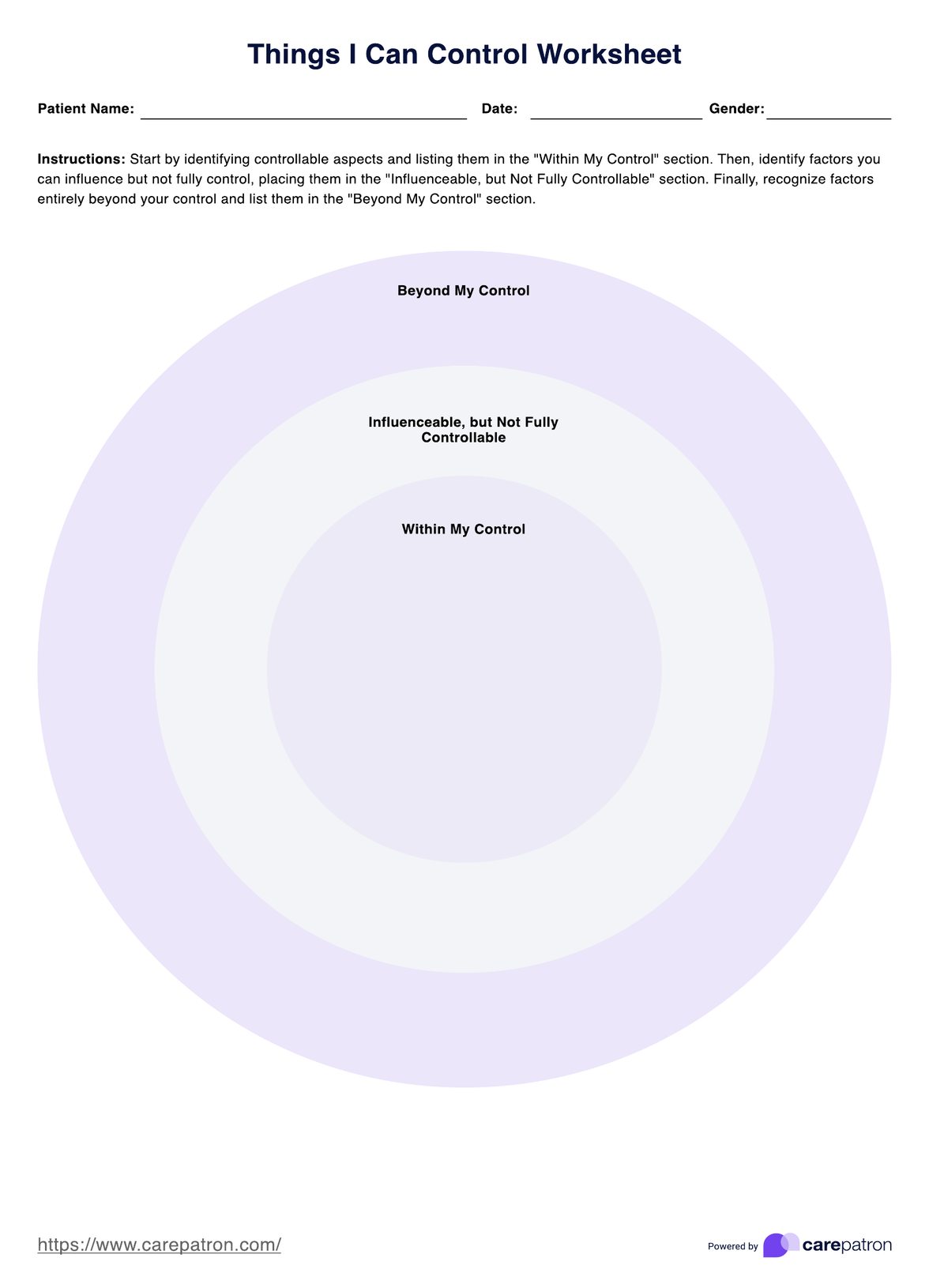The worksheet is used by individuals of all ages, including adults, children, and students, seeking to identify aspects of their lives that can influence and improve their well-being.

Things I Can Control Worksheet
Enhance emotional regulation and positively impact your life with the Circle of Control Worksheet. Take charge of what you can influence today.
Use Template
Things I Can Control Worksheet Template
Commonly asked questions
It helps you focus on what you can change rather than feeling overwhelmed by things beyond your control, fostering a sense of empowerment and resilience.
It typically takes 10-15 minutes to complete the worksheet. Still, the time may vary depending on individual reflection and the complexity of the factors being considered.
EHR and practice management software
Get started for free
*No credit card required
Free
$0/usd
Unlimited clients
Telehealth
1GB of storage
Client portal text
Automated billing and online payments











